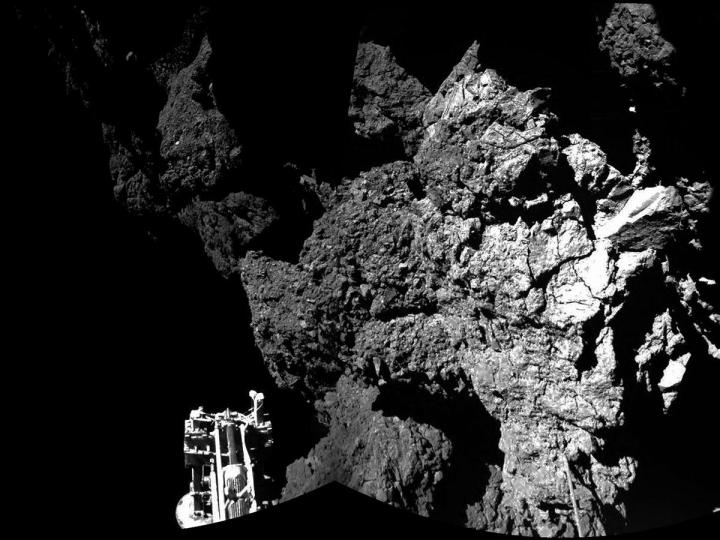
What does this mean for the mission? Philae won’t be beaming any more images back for the time being, though its parent spacecraft Rosetta continues to orbit Comet 67P (also known as Comet Churyumov-Gerasimenko) and listen for signals from the probe. Eventually, it’s hoped that the comet could reach a trajectory where Philae can get enough sunlight again — though it may not be for a year or more.
Despite the hibernation, the European Space Agency (ESA) has declared the operation a resounding success. Philae was able to send back a wealth of useful data about Comet 67P, currently 300 million miles away from Earth, and has taken some astonishing images along the way as well — it drilled for a soil sample, took temperature readings and used radio waves to study the composition of the comet’s rock.
My #lifeonacomet has just begun @ESA_Rosetta. I’ll tell you more about my new home, comet #67P soon… zzzzz #CometLanding
— Philae Lander (@Philae2014) November 15, 2014
“It has been a huge success, the whole team is delighted,” said Stephan Ulamec, lander manager at the DLR German Aerospace Agency, the organization monitoring Philae’s progress. “Despite the unplanned series of three touchdowns, all of our instruments could be operated and now it’s time to see what we’ve got. We still hope that at a later stage of the mission, perhaps when we are nearer to the Sun, that we might have enough solar illumination to wake up the lander and re-establish communication.”
The ESA has described the mission carried out by Philae and Rosetta as a “game-changer” for cometary science thanks to the data that was collected before the lander powered down.
“At the end of this amazing rollercoaster week, we look back on a successful first-ever soft-landing on a comet,” said ESA Rosetta mission manager Fred Jansen. “This was a truly historic moment for ESA and its partners. We now look forward to many more months of exciting Rosetta science and possibly a return of Philae from hibernation at some point in time.”
[Image copyright ESA/Rosetta/Philae/CIVA]


